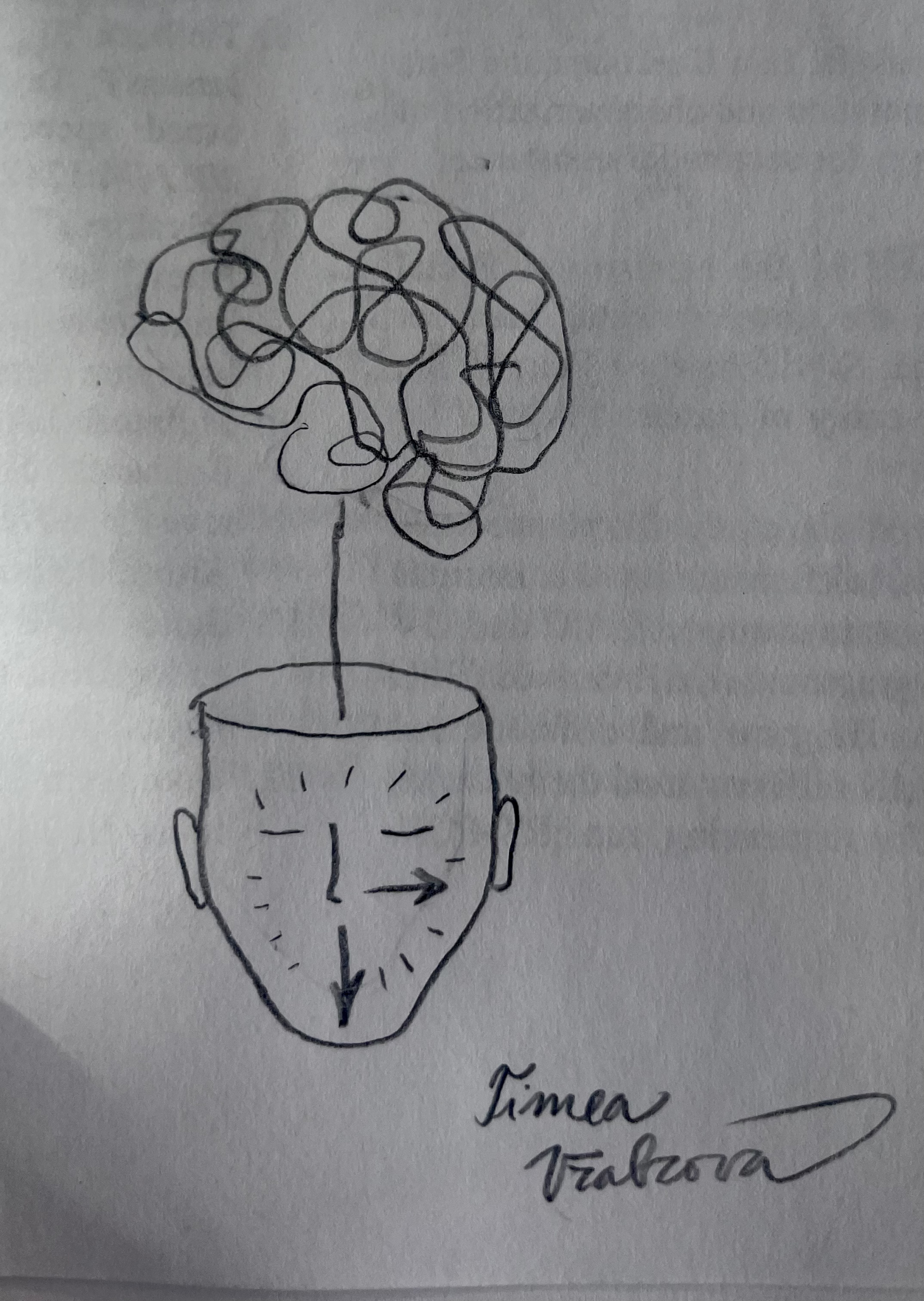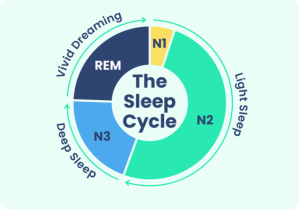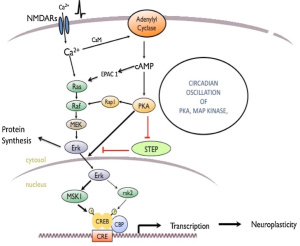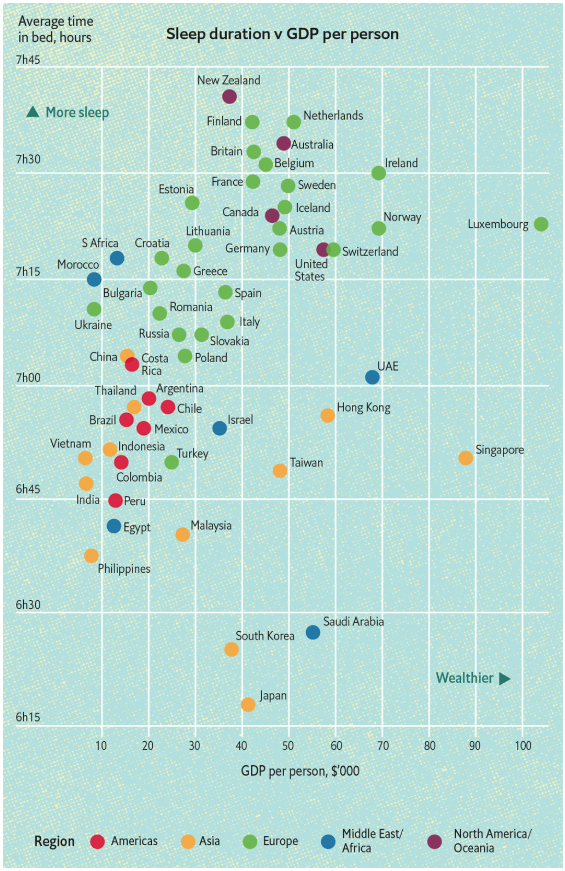 Artstract #2
Artstract #2
Sleep is a complex and multifaceted phenomenon that remains a challenging subject for scientific research. One of the major challenges of studying sleep is that it is a subjective experience, making it difficult to objectively measure and quantify. Another challenge is the variability in individual sleep patterns, making it challenging to generalize findings across different populations. Additionally, sleep is influenced by a variety of factors such as genetics, environmental factors, and lifestyle habits, which makes it challenging to isolate specific variables for study. Furthermore, studying sleep often requires invasive and costly techniques, such as electroencephalography (EEG) and polysomnography (PSG), making it difficult to conduct large-scale studies [1].
Sleep Stages [2]

Figure 1. Stages of Sleep
cAMP/MAPK/CRE transcriptional pathways [3]
The cAMP/MAPK/CRE transcriptional pathways play a crucial role in the regulation of sleep and memory processes in the brain. These pathways are involved in the activation of gene expression and protein synthesis, which are necessary for the consolidation of long-term memories and the regulation of sleep-wake cycles.
Studies have shown that the activation of the cAMP/MAPK/CRE pathways can promote wakefulness and decrease the amount of sleep, while inhibition of these pathways can increase sleep duration. In addition, these pathways have been implicated in the formation and retrieval of memory, as they are involved in the regulation of synaptic plasticity and neuronal connectivity (Figure 2).
Overall, the cAMP/MAPK/CRE pathways provide a molecular framework for the regulation of sleep and memory processes in the brain, and understanding their mechanisms may lead to the development of novel therapeutic approaches for sleep and memory-related disorders.

Figure 2. It is suggested that upstream cAMP stimulation of Ras and/or Rap1 in conjunction with PKA suppression of STEP phosphatase causes MAPK activation during exercise. The eventual reduction in pMAPK could be brought on by STEP’s calcineurin reactivation. It is proposed that the CaM-stimulated adenylyl cyclases are necessary for the durability of hippocampus-dependent memory, and that memory is preserved by a diurnal oscillation of this route in the hippocampus. It is believed that the cAMP/MAPK/CREB transcriptional pathway reaches its peak activity in REM sleep, specifically during the light phase of the circadian cycle.
Environmental Factors [4]
Sleep is significantly influenced by various environmental factors, including light exposure, temperature, noise, and air quality. Exposure to bright light in the morning can promote wakefulness and reset the circadian rhythm, while exposure to light at night can disrupt sleep and suppress the production of melatonin, a hormone that regulates sleep-wake cycles.
Temperature also plays a crucial role in sleep, as a cool environment can promote sleep onset and quality, while a warm environment can interfere with sleep (Figure 3). Noise and air quality can also disrupt sleep by causing arousal and respiratory disturbances.
Other environmental factors, such as stress, physical activity, and diet, can also affect sleep. Understanding and managing these environmental factors is crucial for promoting healthy sleep and preventing sleep-related disorders.

Figure 3. Duration of sleep and GDP of countries across different climate zones (temperature, air quality, noice) and resources
Sleep-Related Disorders [5]
Sleep-related disorders are a group of conditions that affect the quality, timing, and duration of sleep. These disorders can range from mild to severe and can significantly impact overall health, quality of life, and daily functioning.
Some of the most common sleep-related disorders include insomnia, sleep apnea, restless leg syndrome, and narcolepsy. Insomnia is characterized by difficulty falling asleep or staying asleep, while sleep apnea is marked by interrupted breathing during sleep. Restless leg syndrome is characterized by an irresistible urge to move the legs during rest, while narcolepsy is a neurological disorder that causes excessive daytime sleepiness and sudden sleep attacks.
Effective diagnosis and treatment of sleep-related disorders can significantly improve sleep quality, reduce daytime fatigue, and enhance overall health and well-being.
Conclusion
Sleep is a complex and multifaceted phenomenon that remains a challenging subject for scientific research. Sleep is influenced by a variety of factors such as genetics, environmental factors, and lifestyle habits, which makes it challenging to isolate specific variables for study. Therefore, some individuals are more fortunate to have better quality sleep than others based on their living resources and location.
Resources
[1] How sleep works: Understanding the science of sleep. Sleep Foundation. (2022, October 19). Retrieved March 29, 2023, from https://www.sleepfoundation.org/how-sleep-works
[2] Stages of sleep: What happens in a sleep cycle. Sleep Foundation. (2023, March 2). Retrieved March 29, 2023, from https://www.sleepfoundation.org/stages-of-sleep
[3] Xia, Z., & Storm, D. (2017). Role of circadian rhythm and REM sleep for memory consolidation. Neuroscience Research, 118, 13–20. https://doi.org/10.1016/j.neures.2017.04.011
[4] Environmental sleep factors |. | World Sleep Day March 17, 2023. (2015, September 16). Retrieved March 29, 2023, from https://worldsleepday.org/environmental-sleep-factors
[5] Centers for Disease Control and Prevention. (2022, December 14). Key sleep disorders – sleep and sleep disorders. Centers for Disease Control and Prevention. Retrieved March 29, 2023, from https://www.cdc.gov/sleep/about_sleep/key_disorders.html